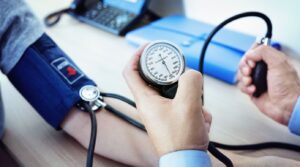On September 29, the world celebrated World Heart Day in an effort to increase awareness of cardiovascular diseases (CVD) and encourage heart-healthy behaviors. The World Heart Federation and the World Health Organization (WHO) launched it in 2000, and 11 years later it was made an annual occurrence. The objective is to “increase awareness, engage communities, and advocate for universal access to CVD prevention, detection, and treatment”.
The Cambridge Dictionary describes a “advertorial” as “an advertisement that is designed to look like a written article.” This year, numerous English-language national daily published full-page advertorials. Instead of promoting a product, it appears to be providing information.
The Union Ministry of Health and other public health organizations hardly ever ran any significant campaigns. It should come as no surprise that the diagnostics, device, and pharmaceutical sectors financed the advertorials. Additionally, medical professionals from upscale corporate tertiary care facilities provided brief advice on changing one’s lifestyle.
A few days prior, The Lancet Regional Health-Southeast Asia published an analysis of data from the National Family Health Survey-5 (2019-2021) that revealed 18.3% of the populace has hypertension (high blood pressure). The Indian Council of Medical Research (ICMR)’s 2017–18 National NCD Monitoring Survey (NNMS), which surveyed people aged 18–69, found a higher prevalence of 28.5%.
These percentages translate into significant amounts in terms of the supply of health services given the size of the Indian population. Low levels of awareness, treatment, and management of hypertension, as well as a wide gap between awareness and treatment, are all alarming findings that are highlighted by both surveys.
According to the NMNS, 28% of those with hypertension were aware of it, and 52% of those who were aware were actively receiving treatment. 47.6% of those polled said they had their blood pressure (BP) checked at some point in their lives; women were more likely to have done so because of prenatal visits.
Higher education mymedic.es and better paid occupations increased the likelihood that people would have their blood pressure tested and, as a result, receive an early diagnosis. A possible indicator of better healthcare systems are the roughly two-and-a-half times higher odds of having blood pressure monitored among residents of south India.
Only 27.9% of those who had hypertension at the time of the survey were aware of the condition; 14.5% were receiving treatment; and 12.6% had their blood pressure under control. Only 21% of people with hypertension sought treatment from a public institution (there is no discernible rural-urban difference on this figure), and only a very small percentage relied only on AYUSH systems.
According to the NFHS-5 analysis, among hypertensive people, 70.5% had their blood pressure checked at least once, 34.3% had been diagnosed prior to the survey and were therefore aware of their condition, 13.7% were being treated with anti-hypertensive medications, and 7.8% had their blood pressure under control. Less likely to be in any of the treatment cascades were men, people without education, people in poverty, people living in remote areas, smokers and drinkers.





























